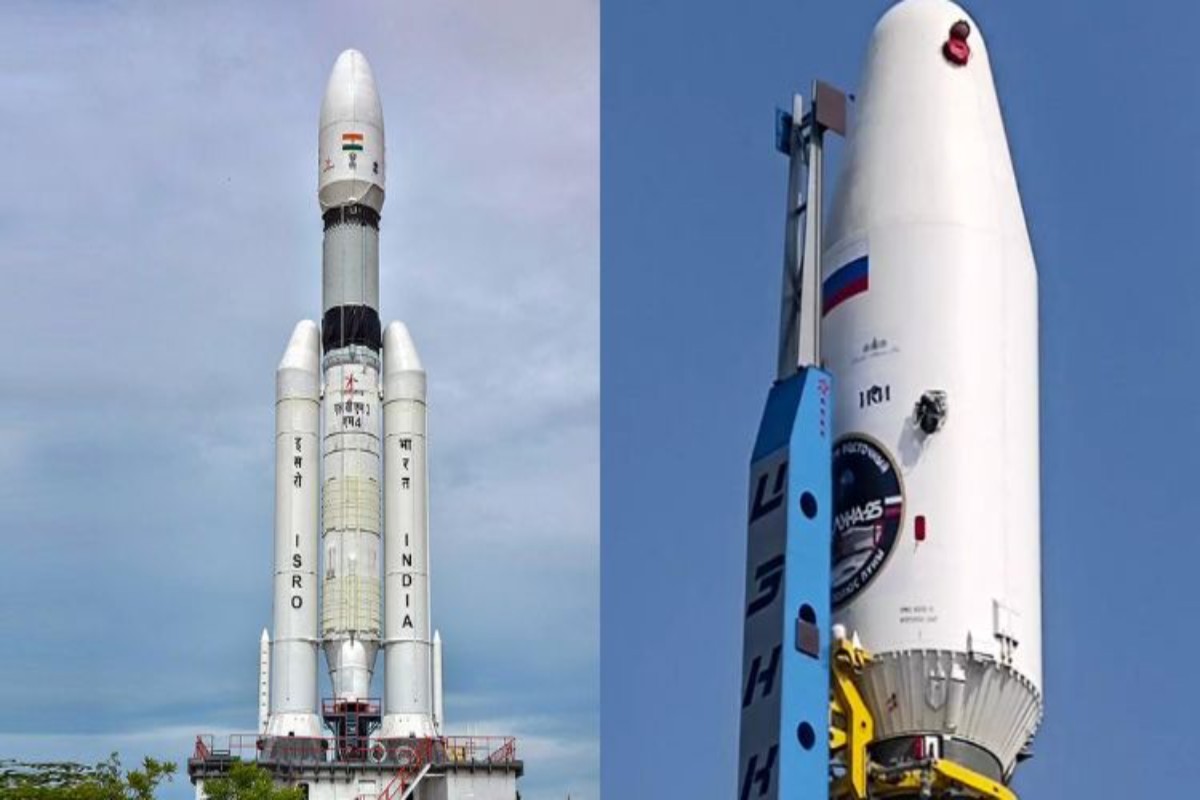
ISRO's Chandrayaan-3 took off for Moon on July 14. Roscosmos Luna 25 was launched on Friday.
In a significant stride towards lunar exploration, Chandrayaan-3, the Indian Space Research Organisation’s (ISRO) lunar mission, has successfully achieved a nearly circular orbit around the Moon.
This achievement follows a successful manoeuvre conducted on Wednesday, which effectively positioned the spacecraft into a lunar orbit with dimensions of 153 by 163 kilometers.
Notably, today marks a pivotal step as the Vikram lander is slated to detach from the propulsion module, progressing the mission towards its next stages.
Luna-25 Sets the Stage for Lunar Landing Amidst Race with Chandrayaan-3
As Chandrayaan-3 advances towards its targeted lunar touchdown, another significant contender in the realm of lunar exploration, Luna-25, a Russian lunar mission launched just a week ago, has triumphantly entered lunar orbit.
This achievement sets the stage for an upcoming soft landing attempt on the lunar surface, scheduled between August 21 and 23. Interestingly, this timing potentially positions Luna-25 ahead of Chandrayaan-3’s anticipated touchdown on August 23.
In an official statement released by Roscosmos in Russian, it was announced, “Luna-25 has entered the orbit of an artificial moon satellite! This was provided by two inclusions of the propulsion system of the automatic station. The first activation was performed by a corrective braking engine and lasted 243 seconds, the second by soft landing engines and lasted 76 seconds.”
This step is part of Luna-25’s plan to orbit Earth’s natural satellite for approximately five days before redirecting its trajectory towards a targeted soft landing on the lunar south pole, scheduled for August 21.
Chandrayaan-3 Progress Report: Lunar-Bound Orbits Complete, Lander Module Separation Next
In a series of calculated steps towards lunar exploration, Chandrayaan-3 has executed its fifth and final lunar-bound orbit manoeuvre.
This precise manoeuvre has successfully positioned the spacecraft even closer to the Moon’s surface.
With this accomplishment, the Indian spacecraft has fulfilled all the necessary Moon-bound manoeuvres, effectively paving the way for the imminent separation of the lander module – comprising the lander and rover – from the propulsion module.
Post-separation, the lander is poised to undergo a “deboost” procedure to adjust its orbit, placing it at a closest point (Perilune) of 30km and a farthest point (Apolune) of 100km.
This particular orbit configuration strategically sets the stage for the much-anticipated soft landing attempt on the lunar south pole, scheduled for August 23 at 5:47 pm.
India and Russia’s Lunar Aspirations: Contrasting Trajectories and Mass
A comparison between Luna-25 and Chandrayaan-3 reveals intriguing differences in their trajectories and mass considerations. Luna-25’s launch on August 11 was propelled by a robust Soyuz-2 Fregat booster. In contrast, ISRO opted for the Launch Vehicle Mark-III for Chandrayaan-3’s mission launch on July 14.
Of note, Luna-25 enjoys an advantage in terms of fuel storage, effectively eliminating concerns about fuel efficiency.
This advantageous setup enables Luna-25 to pursue a more direct trajectory. Dr K Sivan, former ISRO chairperson, emphasized this point when speaking to PTI.
On the other hand, Chandrayaan-3, with its limited fuel-carrying capacity, needed to follow a more circuitous route to reach the Moon.
Furthermore, Luna-25 boasts a leaner lift-off mass of 1,750 kilograms, significantly lighter than Chandrayaan-3’s 3,800 kilograms.
This substantial difference in mass empowers Luna-25 to achieve acceleration more efficiently, contributing to its distinct approach in the lunar race.
To read more such news, download Bharat Express news apps


















